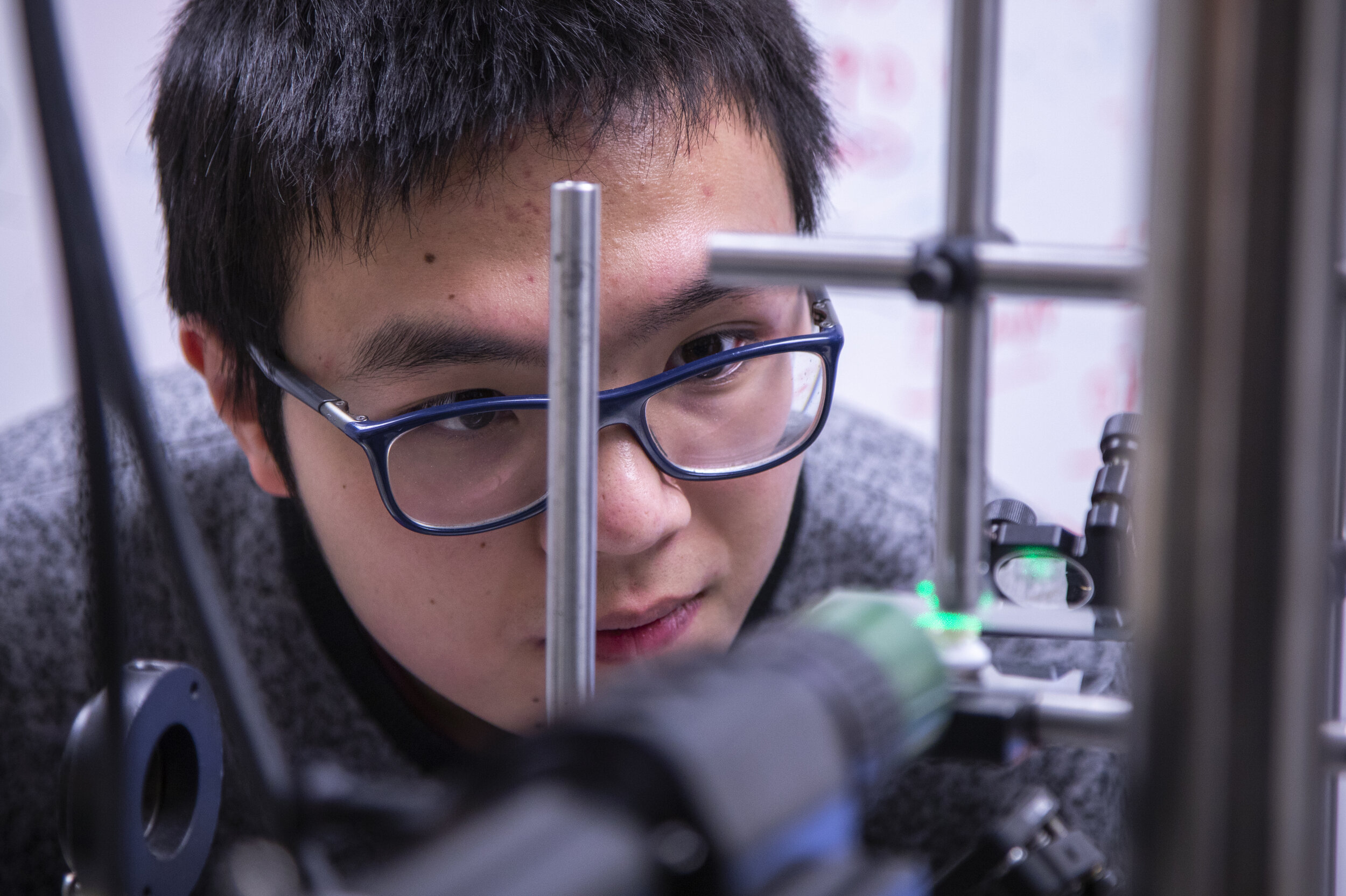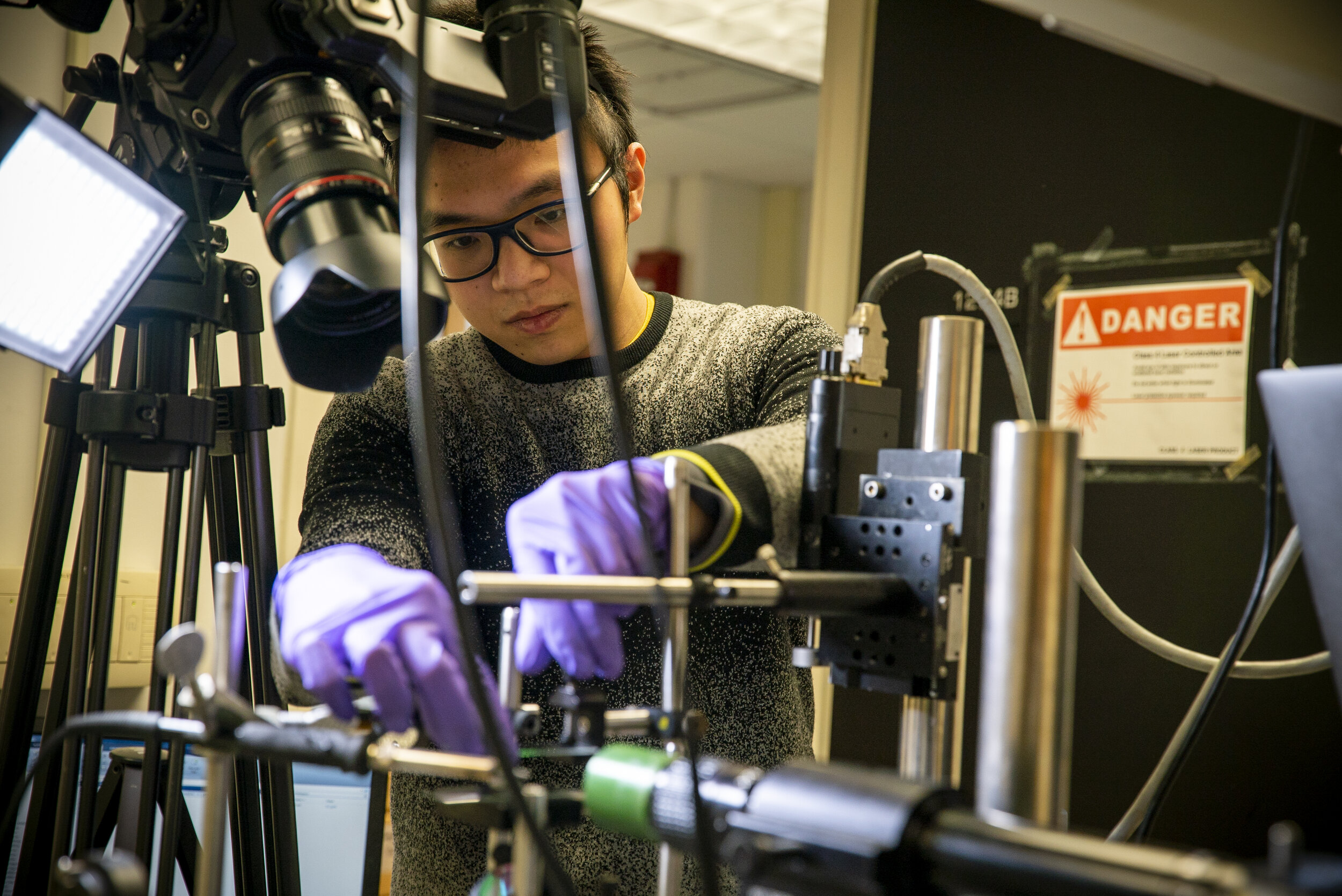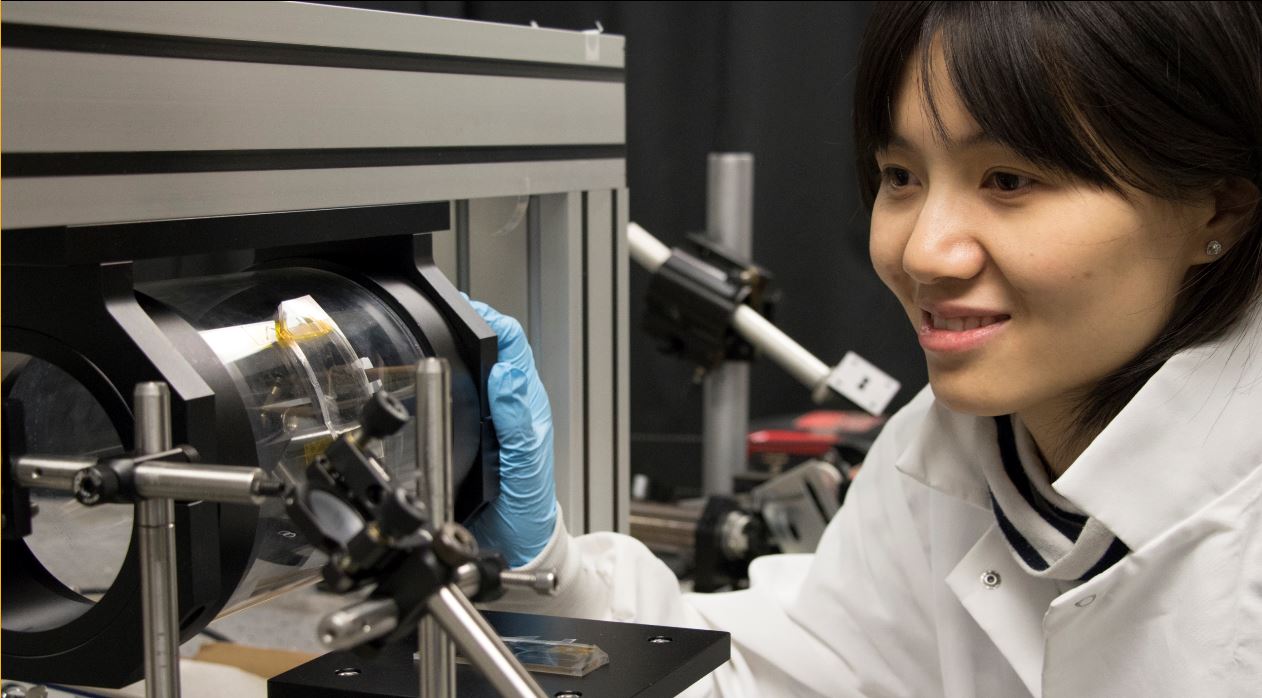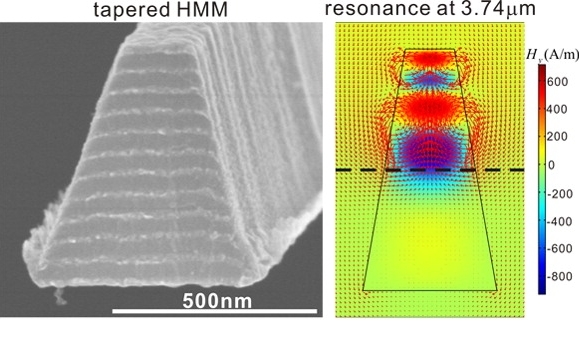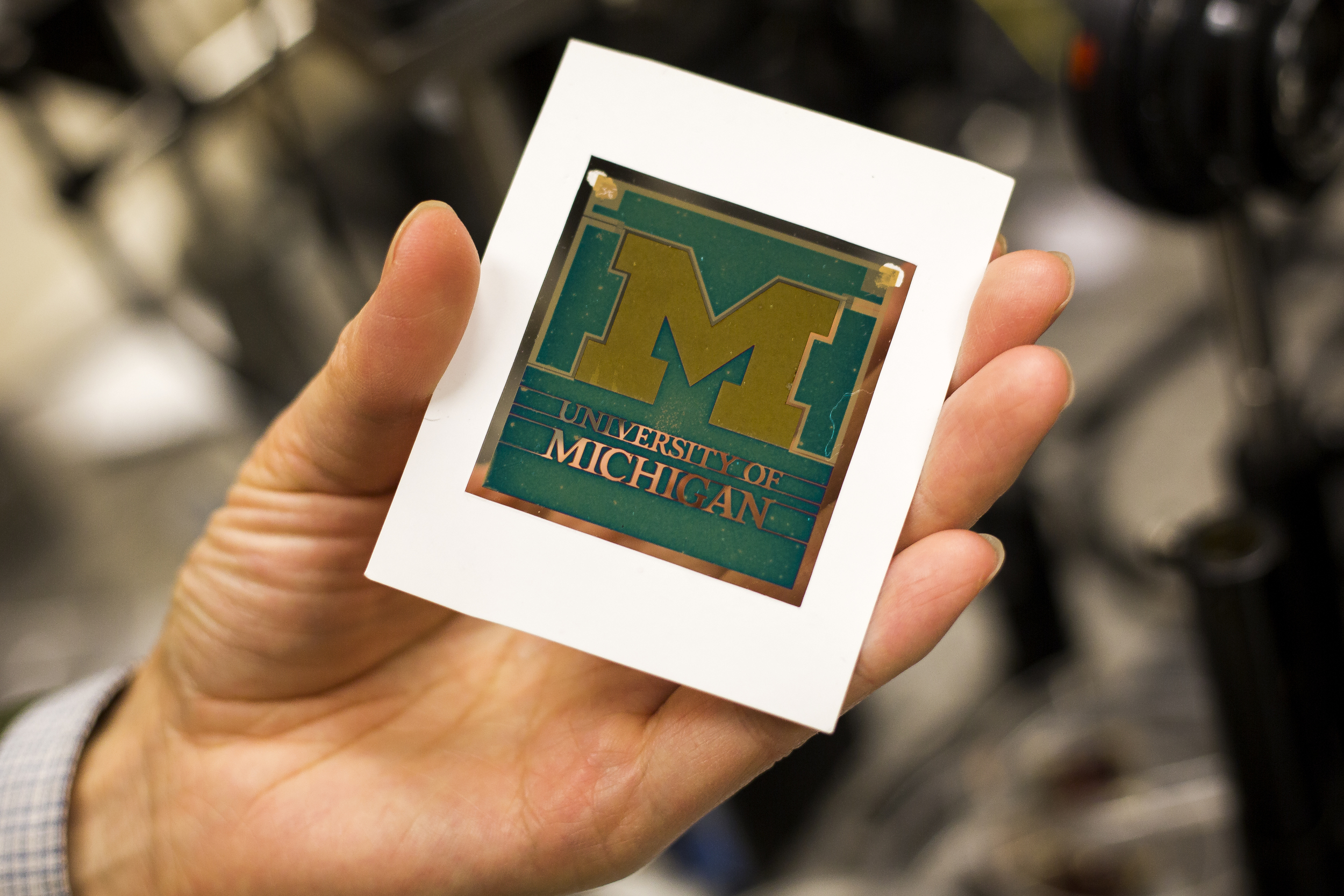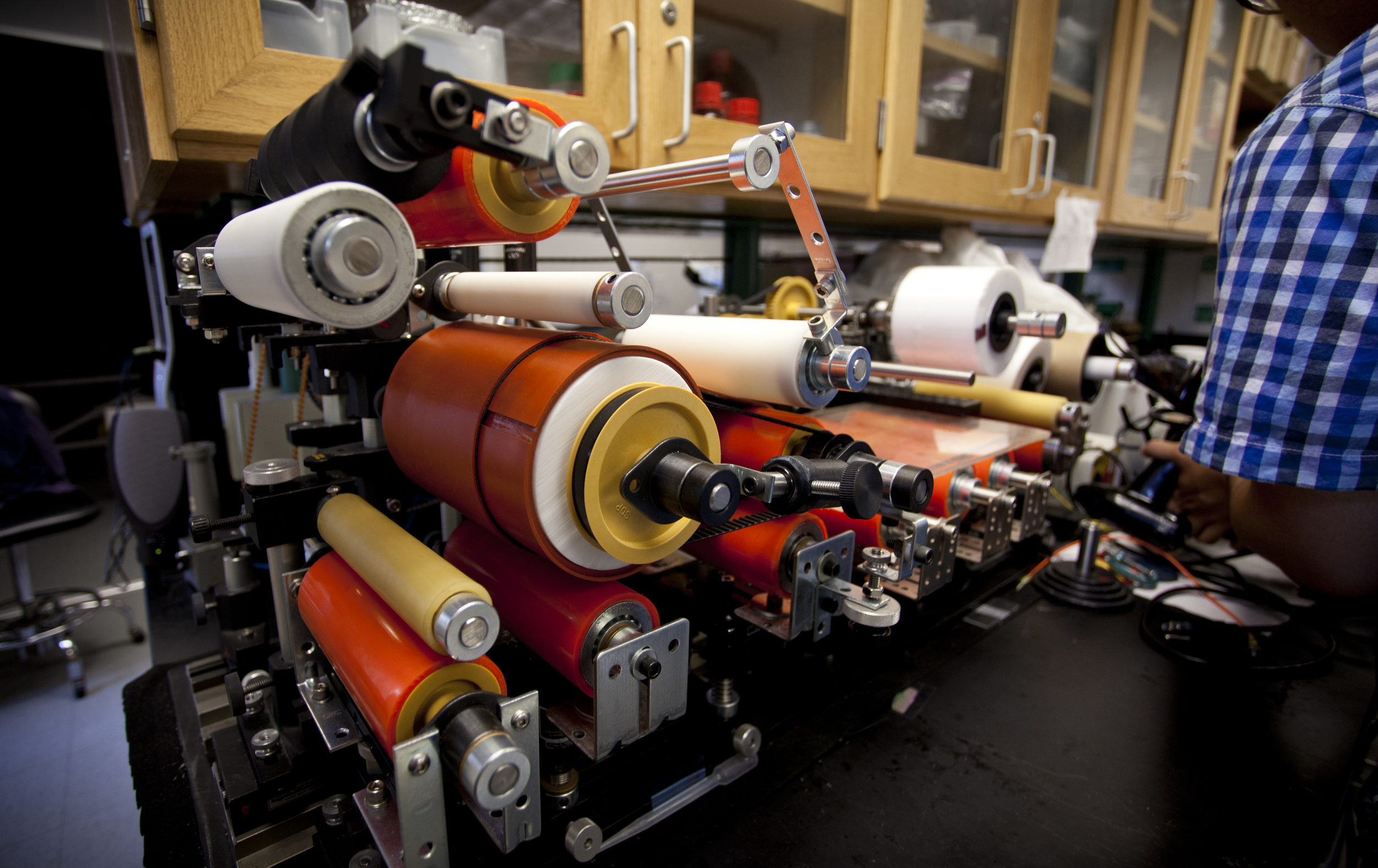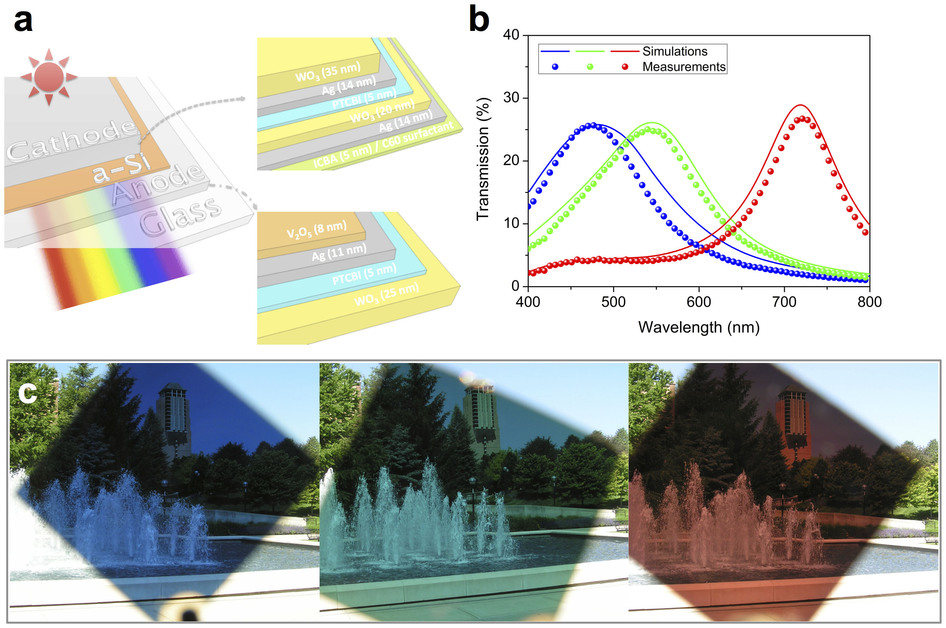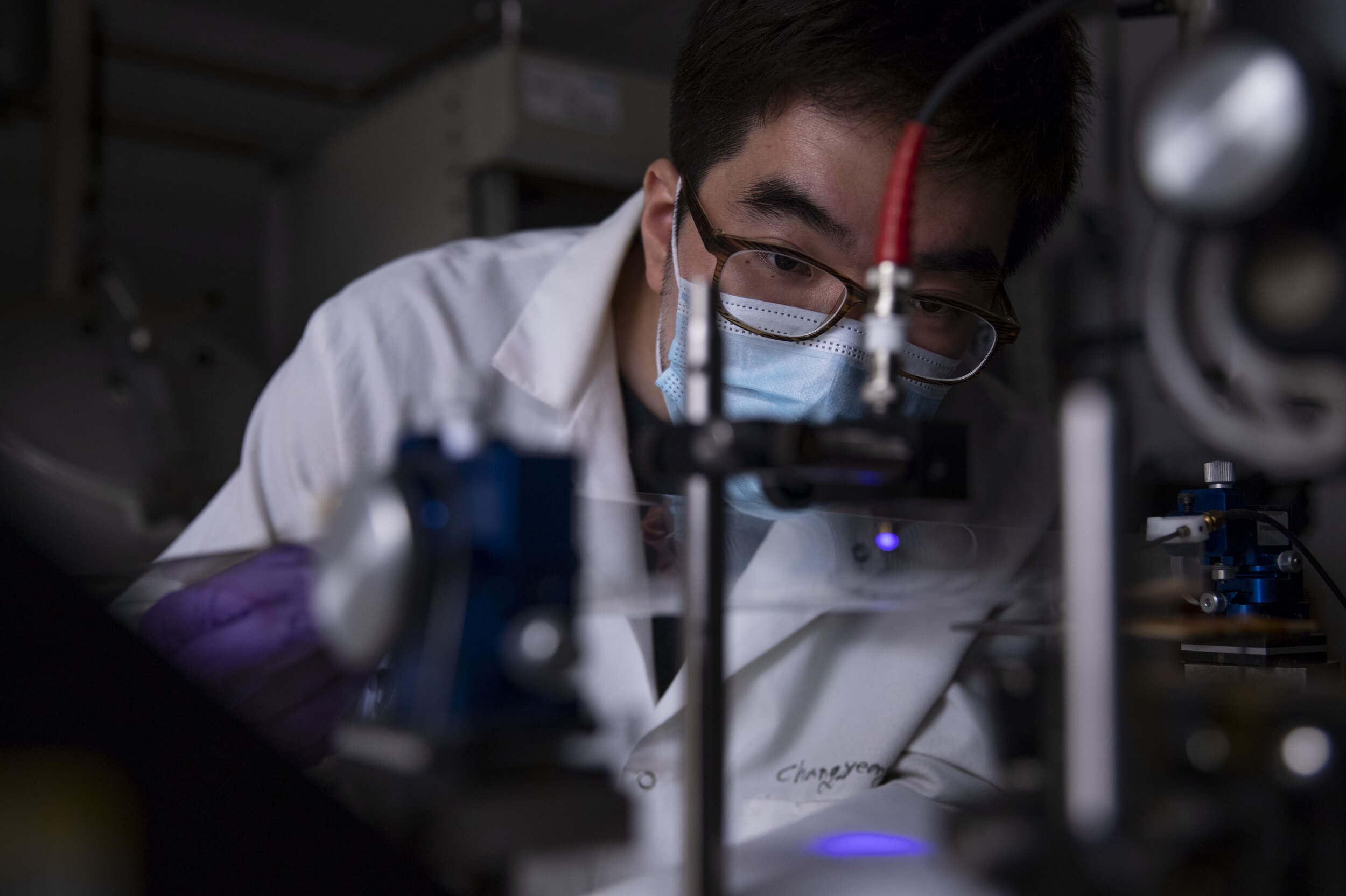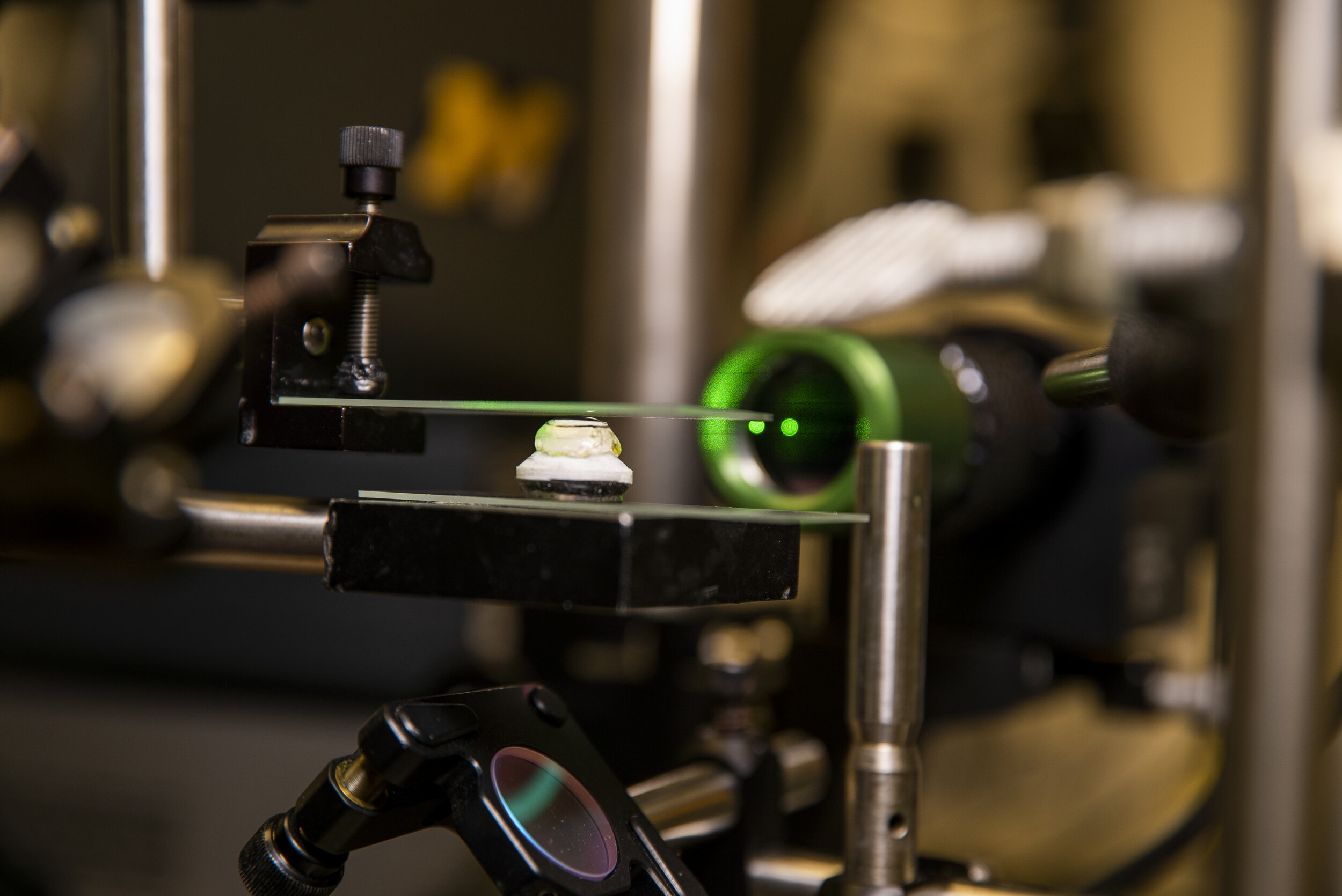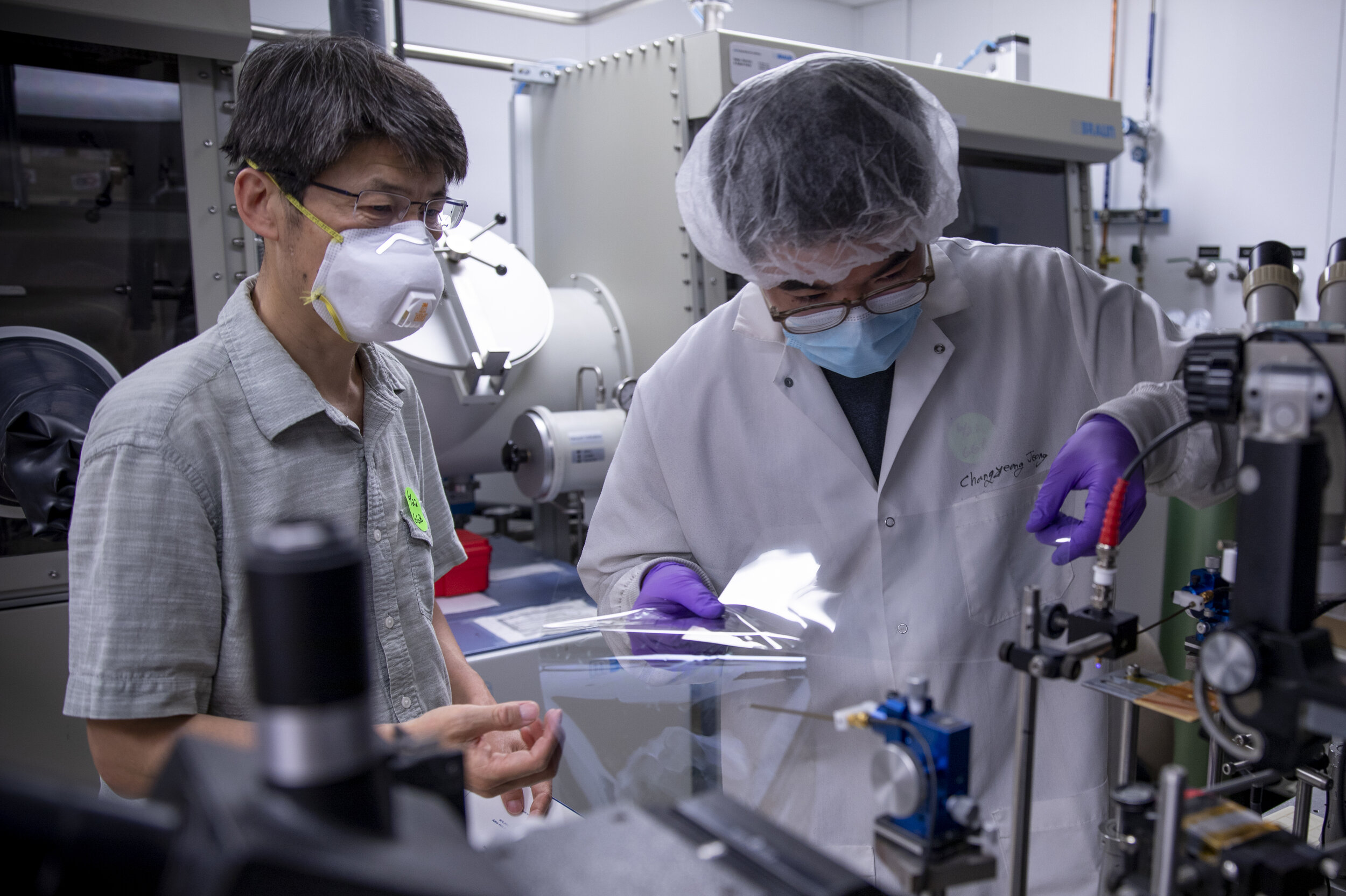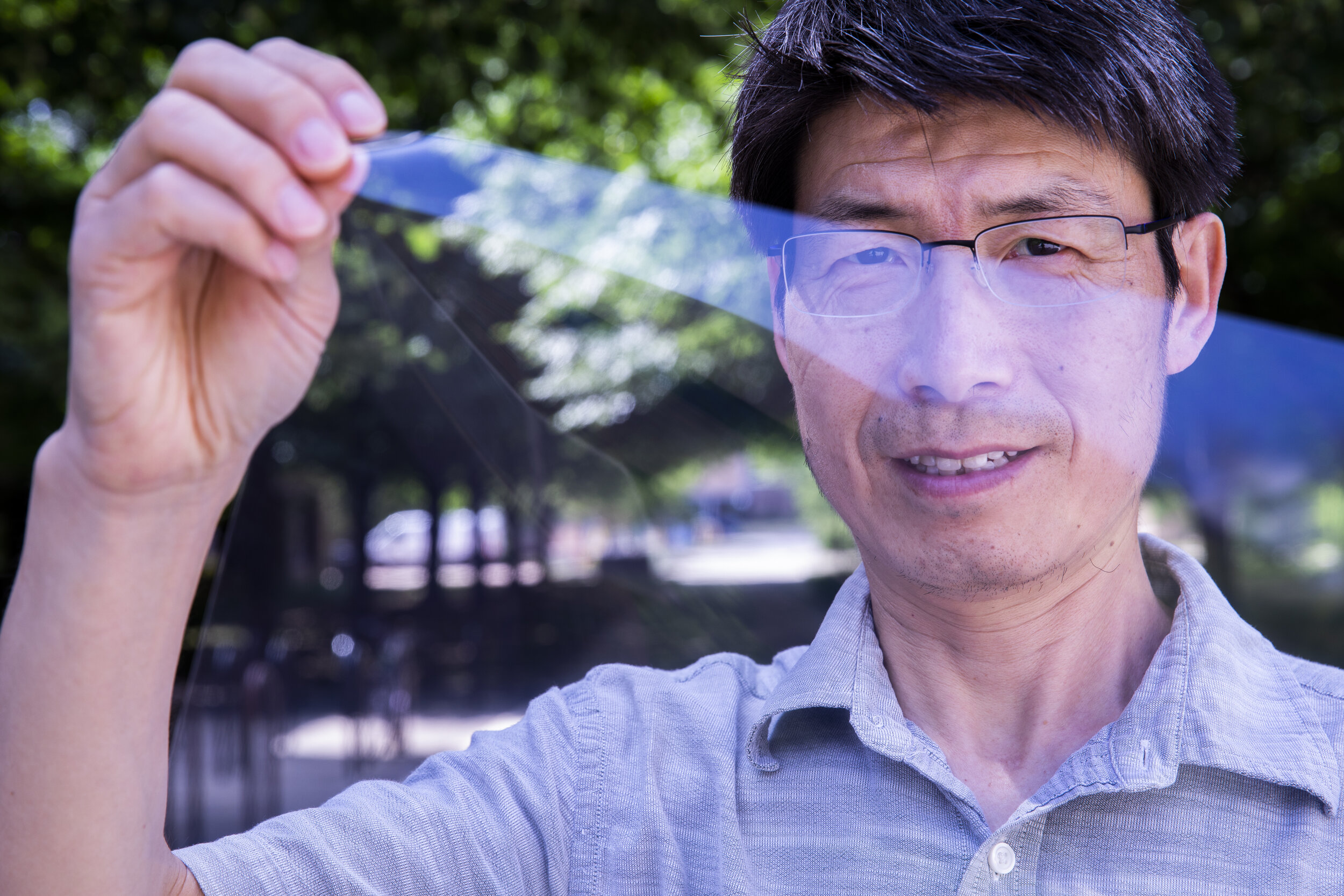In the News
Improved OLED Frees Light within Device Layers
OLEDs have become a staple in our electronic lives. Given their flexibility and low cost, they are commonly used in phones, computers and televisions. Standard OLEDs have an internal quantum efficiency of nearly 100%, meaning that in principle they almost perfectly convert energy into light. But their external quantum efficiency—the share of produced photons that escape from the device—is only around 20%.
In a typical OLED, any light that isn’t emitted at a near perpendicular angle is reflected and guided through the device. These emitted photons are lost due to internal reflections, surface-plasmon-polariton modes, and waveguide modes, which redirect and trap light. While researchers have previously reduced some light-trapping effects with intricate patterned structures, these can be costly and often interfere with the OLED’s electrical operation.
The new work adds to previous efforts by finding a way to completely eliminate light trapping due to waveguide modes without requiring an additional fabrication process. The researchers achieved this by replacing the standard transparent electrode that’s an integral part of an OLED. Instead of using the typical ITO layer, the researchers used a film of silver just 5 nm thick, deposited on a seed layer of copper.
“What I am excited about is that we have developed a very practical approach that can be easily adopted in OLED manufacturing without introducing any complicated steps,” said L. Jay Guo. (Source 1, Source 2)


